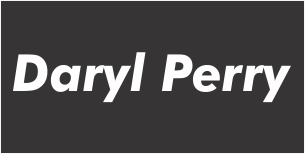One of the coolest things about hosting a podcast is getting to have conversations with people who have directly shaped the way I operate. In this episode of The Marketing in Action Podcast, I sat down with Kate Shoaf, who played a major role in how I think about structure, systems, and strategic messaging. What made this chat even better is that Kate’s current role as Director of Lifecycle Marketing at Teamwork allowed us to dig into a space that a lot of people still aren’t clear on.
Lifecycle marketing can sound like a buzzword. But at its core, it’s about delivering the right message to the right person at the right time. It’s not just about converting leads or retaining customers. It’s about understanding the journey your audience is on and helping guide them to the next step. That could be trying a product, getting more value out of something they’ve already purchased, or simply knowing what to expect along the way.
Kate walked through how her background shaped her approach. She started in PR, transitioned into content and community, then into product and growth. Over time, she realized all the work she was doing tied back to lifecycle marketing. What stood out most to me was how naturally she moved into this space. And even though she didn’t initially have the job title, she had been doing the work all along.
We talked a lot about how segmentation has evolved. It used to be all time-based. You send email one. Wait three days. Send email two. But now, it’s about using data to drive the message. What does your audience need in this moment? What action have they taken? What features have they used? This type of behavior-based segmentation allows you to skip irrelevant messages and get to the point faster.
Kate said something that really stuck with me. The fewer emails I send, the better. That flips the idea of traditional marketing on its head. We’re often taught to increase touch points. Be everywhere. Repeat the message. But if your communication is well timed and actually useful, you can do less and get better results. That’s a lesson all marketers and business owners can benefit from.
We also dove into dynamic content. This is where using the right data lets you personalize messaging at scale. Instead of sending everyone the same thing, your content shifts based on the individual. It’s not just a name field either. It’s goal-based messaging. It’s skipping irrelevant steps. It’s sending fewer messages while making a bigger impact.
One of my favorite parts of this conversation was when we talked about concise messaging. In a time where tools are cranking out massive walls of copy, standing out means doing the opposite. If someone can’t digest your message in a single scroll on their phone, you’re likely losing their attention. Be clear. Be direct. Tell them what to expect and what to do next. That’s it.
The best part is that everything we talked about in this episode is practical. Whether you're a solo business owner, working in SaaS, or building your brand, the principles are the same. Know who you're talking to. Understand what matters to them. Use data to meet them where they are. Keep the message focused. And don’t be afraid to simplify.
This was a full-circle moment for me. Kate was a huge influence on how I think about marketing, and getting to talk through these concepts with her just reinforced how important structure, clarity, and timing really are.
If you’re not already connected with Kate, make sure to do that. You can find her on LinkedIn. She shares a lot of great insights that apply whether you’re in B2B, B2C, or just trying to make sense of your customer journey.




